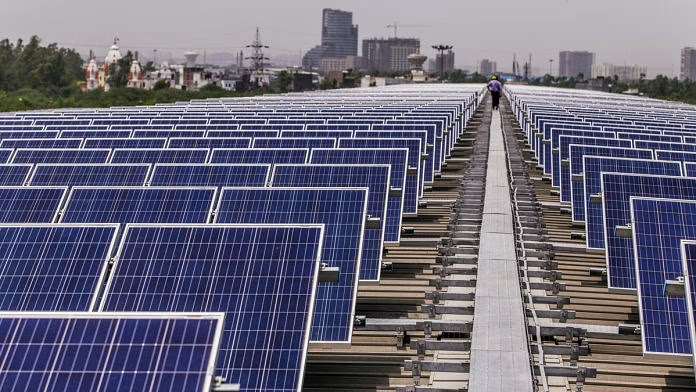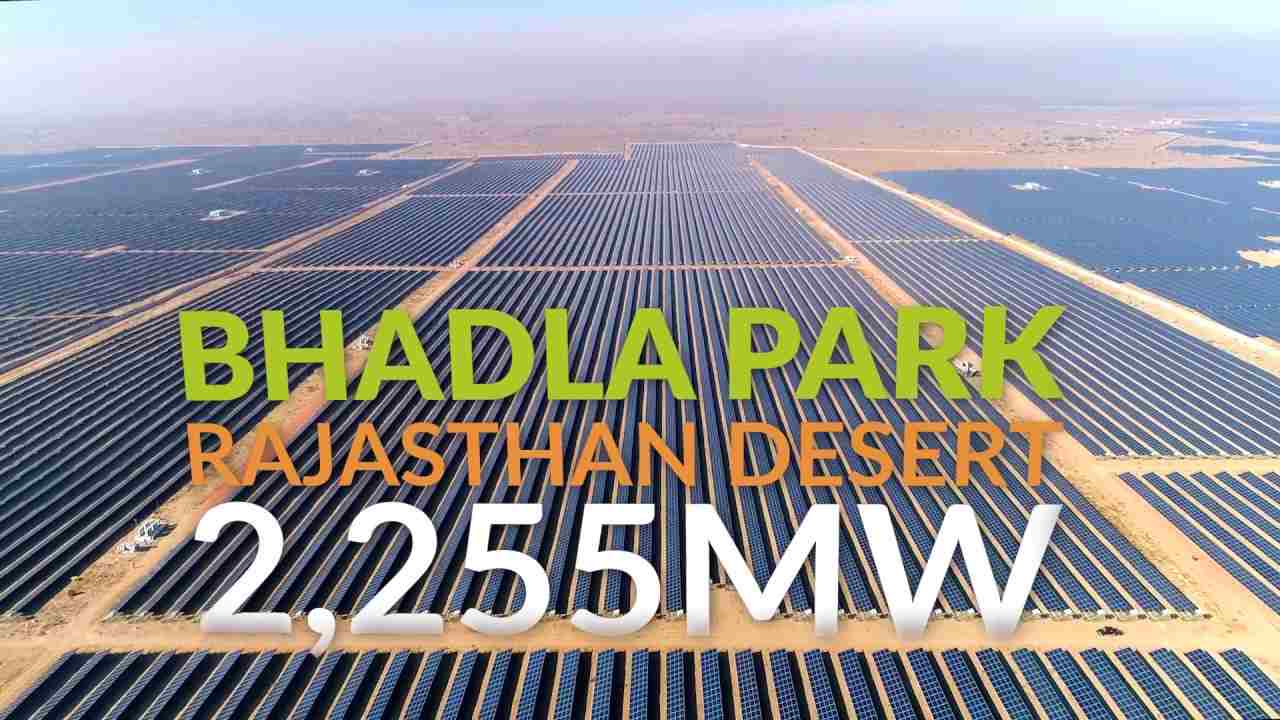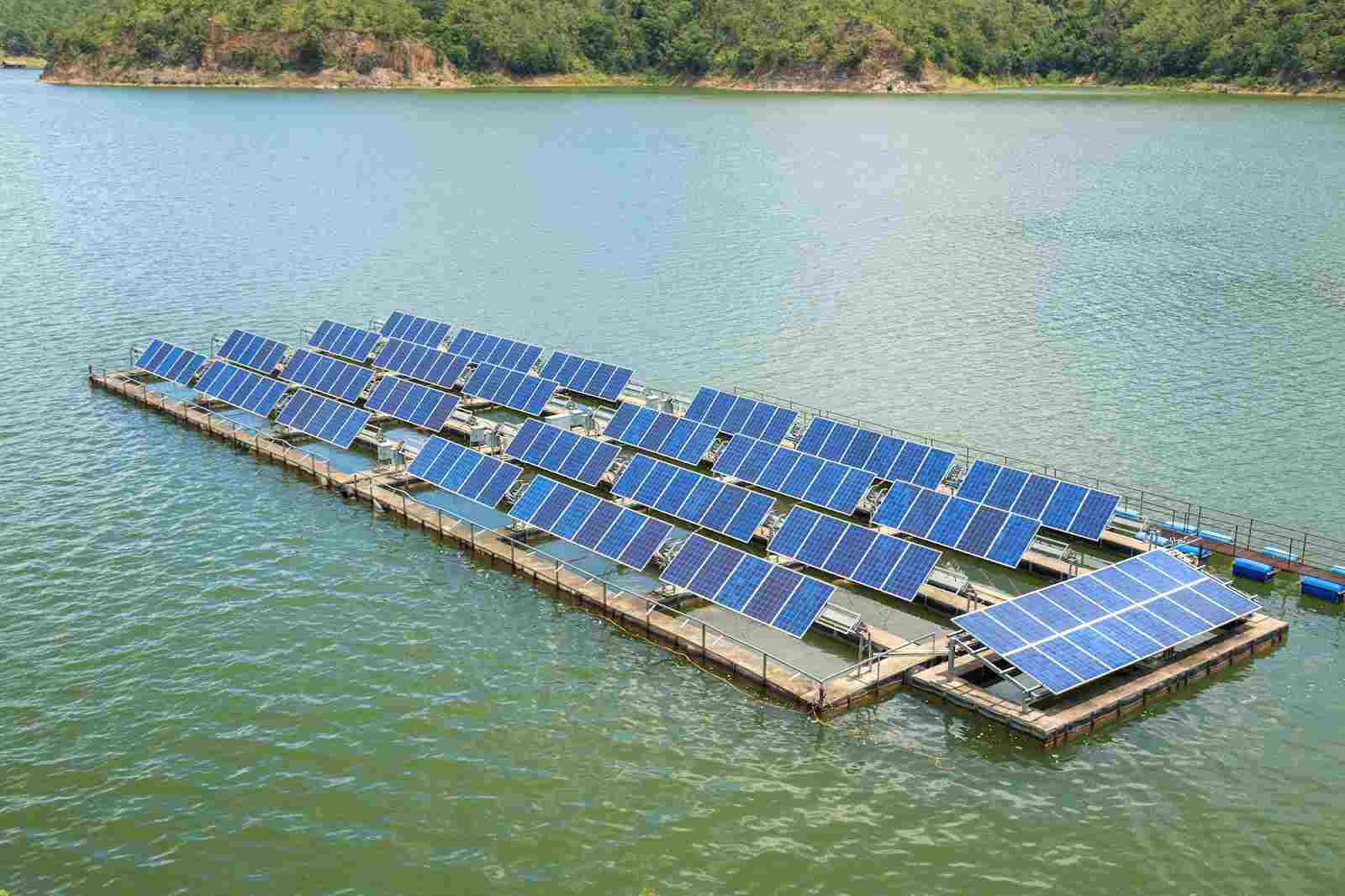A Comprehensive Guide To Solar Power Generation in India

Overview:
Solar power in India is a rapidly growing business that is a component of renewable energy in India. As of November 30, 2021, the country's solar generation capacity was 48.556 GW.
The Indian government set an initial capacity goal of 20 GW for 2022, which was met four years ahead of schedule. In 2015, the aim was expanded to 100 GW of solar capacity (including 40 GW of rooftop solar) by 2022, with a US $100 billion expenditure. A total of nearly 42 solar parks have been built in India to make land accessible to solar plant developers. According to the Ministry of New and Renewable Energy, an additional 36.03 GW (as of January 31, 2021) of solar projects are in different phases of execution, with another 23.87 GW in the bidding process.
Rooftop solar power accounts for 2.1 GW, 70% of which is industrial or commercial in nature. India is developing off-grid solar power for local energy requirements in addition to its large-scale grid-connected solar photovoltaic (PV) effort. Solar goods have increasingly contributed to addressing rural demands; by the end of 2015, the nation had sold just under one million solar lights, lowering the need for kerosene. Under a nationwide program, 1,18,700 solar house lighting systems and 46,655 solar street lighting installations were erected that year. Well over 14 lakh (1.4 million) solar cookers were supplied in India.
The International Solar Alliance (ISA), which India nominated as a founding member, is based in India. India has also proposed the "One Sun One World One Grid" and "World Solar Bank" concepts to capture plentiful solar electricity on a worldwide scale.
How is Solar Power Generated?
Even in overcast circumstances, energy may be produced straight from the sun. Solar energy is utilized all around the globe and is becoming more popular for generating electricity, heating, and desalinating water. Solar energy is produced in two ways:
Photovoltaics (PV), often known as solar cells, are electrical devices that directly convert sunlight into energy. The contemporary solar cell is probably an image that most people are familiar with—they are found in solar panels mounted on homes and in calculators. They were developed by Bell Telephone Laboratories in the United States in 1954. PV is one of the fastest-growing renewable energy technologies today, and it is poised to play a significant part in the future global power generation mix.
Solar PV plants may be integrated to generate commercial-scale power or placed in smaller configurations for mini-grids or personal consumption. Using solar PV to power mini-grids is a great way to supply electricity to people who do not live near power transmission lines, especially in developing nations with abundant solar energy resources.
Solar panel production costs have dropped drastically in the previous decade, making them not only accessible but often the cheapest type of power. Solar panels have a lifetime of around 30 years and come in a range of colors based on the material used in their manufacture.
Concentrated solar power (CSP) concentrates the sun's radiation using mirrors. These rays heat fluid, resulting in steam, which drives a turbine and generates power. CSP is utilized in large-scale power facilities to produce energy.
A CSP power plant typically consists of a field of mirrors that redirect light to a tall, thin tower. One of the primary benefits of a CSP power station over a solar PV power plant is the ability to store heat in molten salts, enabling energy to be produced after the sun has set.
National Solar Potential:
With around 300 clear and bright days per year, the estimated solar energy incidence on India's land area is approximately 5 quadrillion kilowatt-hours (kWh) per year (or 5 EWh/yr). The solar energy accessible in a single year outweighs the whole energy production of India's fossil fuel reserves. In India, the daily average solar-power-plant generating capacity is 0.30 kWh per m2 of usable land area, which equates to 1,400–1,800 peak (rated) capacity operating hours per year using commercially-proven technology.
India launched a 40 crore (US $5.3 million) initiative in June 2015 to detect solar radiation with a spatial resolution of 3 by 3 kilometers (1.9 km x 1.9 mi). The Indian solar-radiation atlas is built on this network of solar-radiation monitoring stations. The National Institute of Wind Energy, Ministry of New and Renewable Energy, has erected 121 solar radiation resource assessment (SRRA) stations around India to develop a database of solar-energy potential. Data is gathered and sent to the Wind Energy Technology Center (C-WET). DHI consists of three metrics: Global Horizontal Irradiance (GHI), Direct Normal Irradiance (DNI), and Diffuse Horizontal Irradiance (DHI).

The Bhadla Solar Park in Rajasthan is the world's biggest solar park in terms of generation and second largest in terms of area as of March 2020. It is ground-mounted at 27,930 MW of installed capacity. This sector consists mostly of large-scale solar installations as well as even larger utility-scale solar projects that produce electricity centrally and distribute it through the grid. The second biggest category, at 2,141 MW, was rooftop solar, which includes residential solar, commercial and industrial solar roofs, as well as a variety of installations such as agricultural buildings, community and cultural centers. In 2018, 70% of rooftop solar was in the industrial and commercial sectors, with just 20% being residential rooftop solar. Rooftop solar as a percentage of total solar installations is substantially lower than in other leading solar nations, although it is expected to reach 40 GW by 2022 under government objectives. According to a preliminary estimate, India had about 430 MW of residential rooftop solar in 2018, whereas the UK, with around half the solar capacity of India, had over 2,500 MW of residential solar. The smallest component, at 919 MW, might play a role in reaching communities and homes that do not have a connection to the national grid.
In August 2016, the projection for solar photovoltaic installations for the calendar year was about 4.8 GW. In the first eight months of 2016, more solar capacity was added than in the entire year of 2015.India's solar projects totaled around 21 GW, with approximately 14 GW under development and another 7 GW to be auctioned. By the end of 2017, the country's solar capacity had reached 19.7 GW, making it the third-largest worldwide solar market.
At an event in Delhi in mid-2018, Indian electricity minister RK Singh announced a tender for a 100GW solar facility while discussing a 10GW procurement set to be published in July of that year (at the time, a world record). He also raised the government's aim of installing renewable energy to 227GW by 2022.
Electrification of rural areas:
Rural India's growth is hampered by a lack of energy infrastructure. The electricity system in India is underdeveloped, with vast populations still living off the grid. In 2004, around 80,000 villages in the country lacked power, with 18,000 of them unable to be electrified owing to difficulties in expanding the traditional infrastructure. The 2002–2007 Five-Year Plan established a goal of energizing 5,000 such settlements. More than 2,700 villages and hamlets have been powered by 2004, largely using solar photovoltaic installations. The development of low-cost solar technology is seen as a viable alternative, since it would provide an electrical infrastructure consisting of a network of local-grid clusters with distributed power production. It has the potential to circumvent (or alleviate) costly, long-distance, centralized power-delivery networks, providing low-cost energy to large populations. During the fiscal years 2016–17, 91 villages in Rajasthan were electrified with a solar standalone system, and over 6,200 families got a 100W solar home-lighting system.
Lamps and Lighting:
A total of 4,600,000 solar lanterns and 861,654 solar-powered house lights had been installed by 2012. They are often used to replace kerosene lamps and may be obtained with a modest loan for the cost of a few months' supply of kerosene. The Ministry of New and Renewable Energy is providing a 30 to 40% discount on lanterns, residential lights, and small systems (up to 210 Wp). By 2022, 20 million solar lights are planned to be installed.
Agricultural Support:
Irrigation and drinking water are both served by solar photovoltaic water-pumping systems. Most pumps have a 200–3,000 W (0.27–4.02 hp) motor that is driven by a 1,800 Wp PV array and can supply around 140,000 liters (37,000 US gal) of water per day from a total hydraulic head of 10 m. (33 ft). By October 31, 2019, a total of 181,521 solar photovoltaic water pumping systems have been erected, with the total number of solar photovoltaic water pumping systems expected to reach 3.5 million by 2022 under the PM KUSUM program. Solar pump performance may be increased on hot sunny days when the water demands are greater for watering the fields by keeping pumped water flowing/sliding over the solar panels to keep them cooler and clean.

Agro photovoltaics is the generation of energy while maintaining agricultural produce on the same land. Harvests are dried for storage using solar dryers. Low-cost solar-powered bicycles are also available to transport agricultural workers between fields and villages, among other things. Fertilizer is created on-site/in the field using solar power and produces no carbon emissions.
Rainwater Harvesting:
Rainwater, in addition to solar energy, is a significant renewable resource in any location. Every year, significant portions of India are covered with solar PV panels. As rainfall is extremely low in salinity, solar panels may also be utilized to gather the majority of the rainwater that falls on them, and drinking or brewing water quality, free of bacteria and suspended debris, can be created by simple filtering and disinfection methods. Water supplies of high quality, closer to inhabited regions, are becoming scarce and more expensive for customers. The increased revenue from drinking water production makes solar PV power plants feasible even in heavy rainfall and foggy areas by using rainwater for value-added goods such as bottled drinking water.
Challenges and Opportunities:
In India, the cost of acquiring land is high. Land dedication for solar array construction must compete with other requirements. For every 40–60 MW produced, utility-scale solar power facilities need around 1 km2 (250 acres) of land. One option is to build big solar-power plants on the water surface of canals, lakes, reservoirs, agricultural ponds, and the sea. The output of solar panels has significantly increased due to improved cooling of the solar panels and sun tracking technology. These sources of water may also be used to clean the solar panels. By 2018, the cost of installing floating solar plants had dropped dramatically.

Indian Railways announced a proposal to deploy 4 GW of capacity along its rails in January 2019. Highways and railroads may also avoid the expense of land closer to load centers, lowering transmission-line costs by erecting solar plants 10 meters above the roadways or rail lines. Solar electricity produced by road areas may also be utilized to charge electric cars while they are in motion, lowering gasoline expenses. Commuters would be protected from rain and summer heat, boosting their comfort.
The most appropriate design for much of India would be a collection of rooftop power-generation installations linked by a local grid. Not only the rooftop space, but also the exterior surface area of tall structures may be utilized for solar PV power production by mounting PV modules vertically instead of glass panels to cover the façade area. To attract individuals and family-sized residences, such infrastructure, which lacks the economies of scale of utility-scale solar-panel deployment, requires a lower deployment price. The cost of high-efficiency and compact mono PERC modules, as well as battery storage solutions, has come down, making rooftop solar PV more affordable and practicable in a microgrid.
Greenpeace recommends that India pursue a policy of developing solar power as a dominant component of its renewable energy mix, citing the country's identity as a densely populated country in the subcontinent's tropical belt, which has an ideal combination of high insolation and a large potential consumer base. In one scenario, India may make renewable energy the backbone of its economy by 2030, reducing carbon emissions while maintaining economic development potential. According to the research, 100 GW of solar electricity might be produced by a combination of utility-scale and rooftop solar, with rooftop solar having a realizable potential of 57 to 76 GW by 2024.
NTPC produced 160.8 million kWh at a capacity utilization of 16.64 percent (1,458 kWh per kW) during the 2015-16 fiscal year, which was more than 20% less than the solar-power sector's declared standards.Because the nameplate capacity of solar PV plants is actually the gross DC capacity of the installed PV modules, the annual net peak solar power generation is only around 20,000 MW (nearly 60% of the nameplate DC rating of 34,000 MW) after accounting for the applicable derating factors and system losses before feeding in to the high voltage power grid.
Offering incentives to stimulate solar-plant installations up to a certain level (such as 7,000 MW) is deemed appropriate. Otherwise, subpar equipment with overstated nameplate capacity might degrade the industry. The purchaser, transmission agency, and financial institution should insist on capacity utilization and long-term performance guarantees for the equipment, as well as insurance coverage in the event that the original equipment manufacturer goes out of business. Concerned about the inadequate quality of equipment, India announced draft quality guidelines in May 2017 for solar plant equipment suppliers who adhere to Indian requirements.
Conclusion:
India has a large amount of solar energy potential. Approximately 5,000 trillion kWh of energy is incident across India's geographical surface each year, with most areas getting 4–7 kWh per square meter every day. Solar photovoltaic electricity can be successfully harvested, allowing for massive scalability in India. Solar also allows for dispersed power generation and allows for a quick capacity increase with short lead periods. Off-grid, decentralized, and low-temperature applications will benefit rural electrification as well as address other energy demands for electricity, heating, and cooling in both rural and urban locations. Solar energy is the most secure of all energy sources since it is readily accessible. In theory, a tiny proportion of total incoming solar energy (if caught properly) can supply all of the country's electricity needs.

